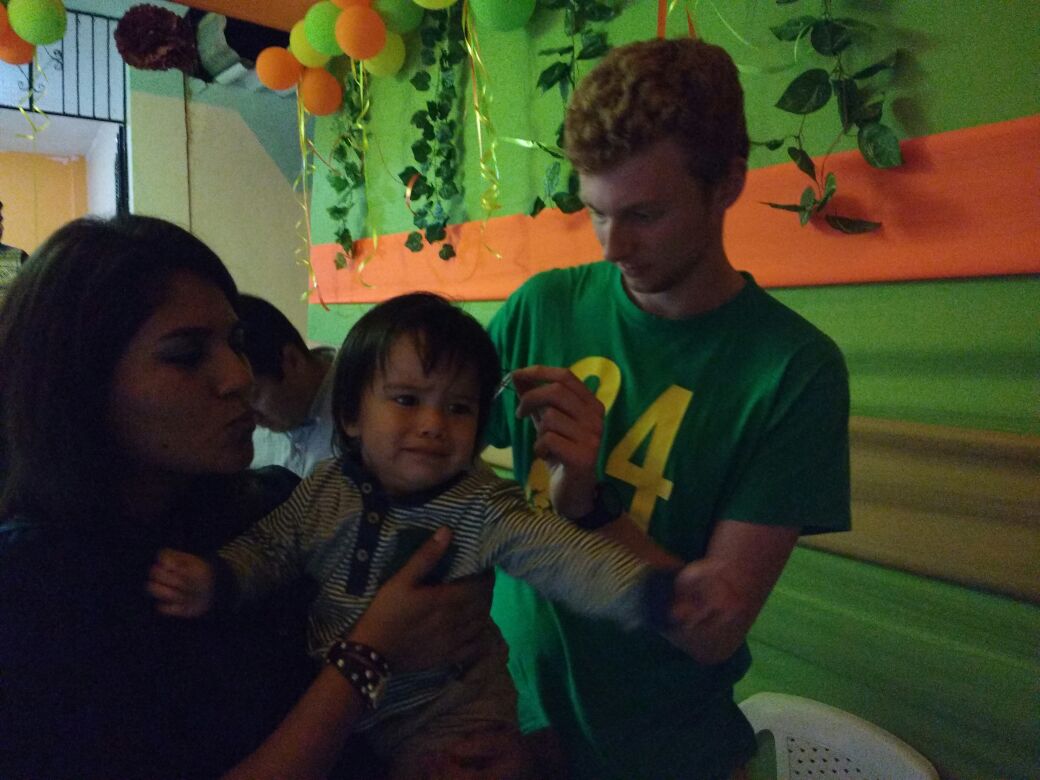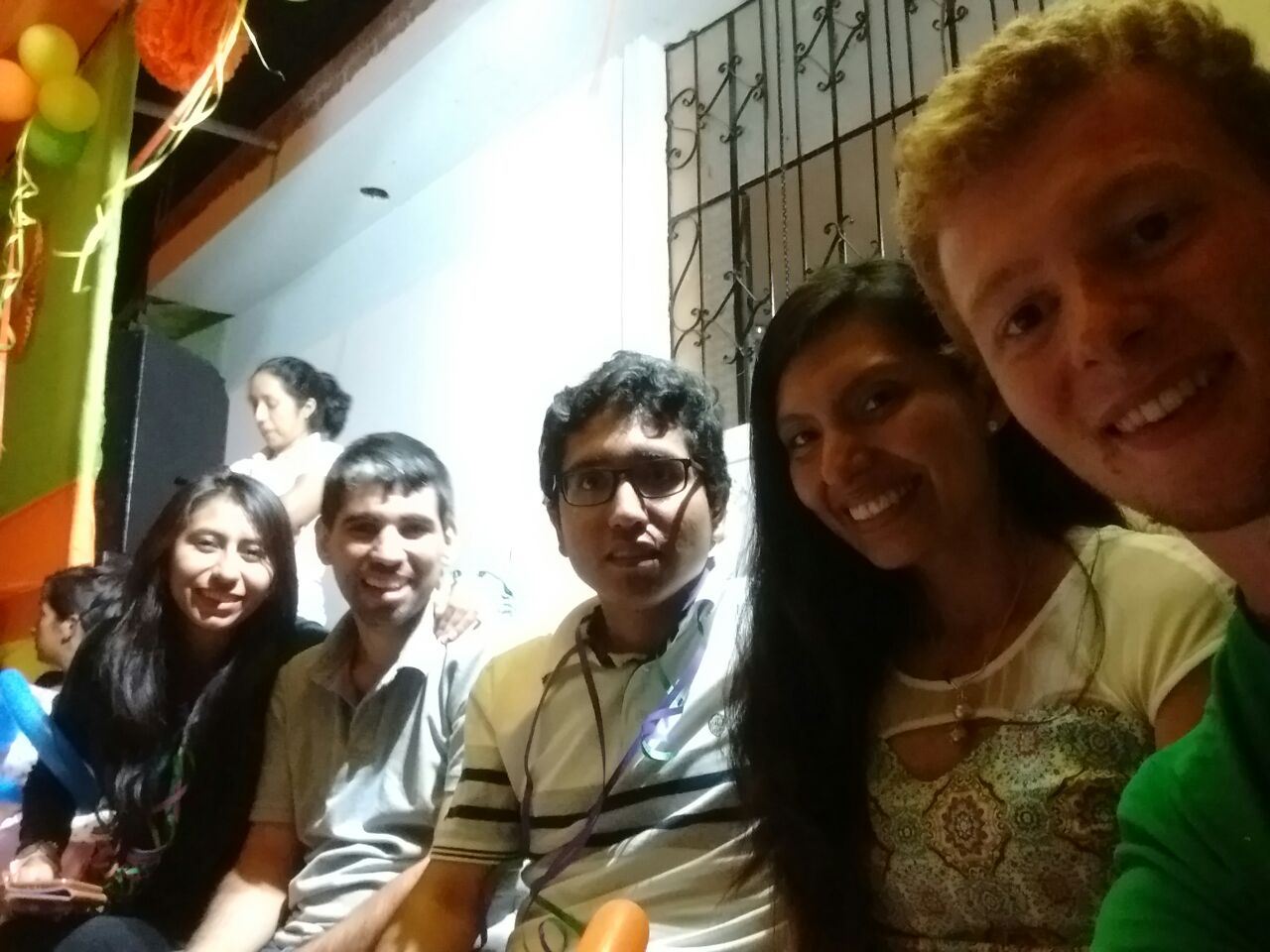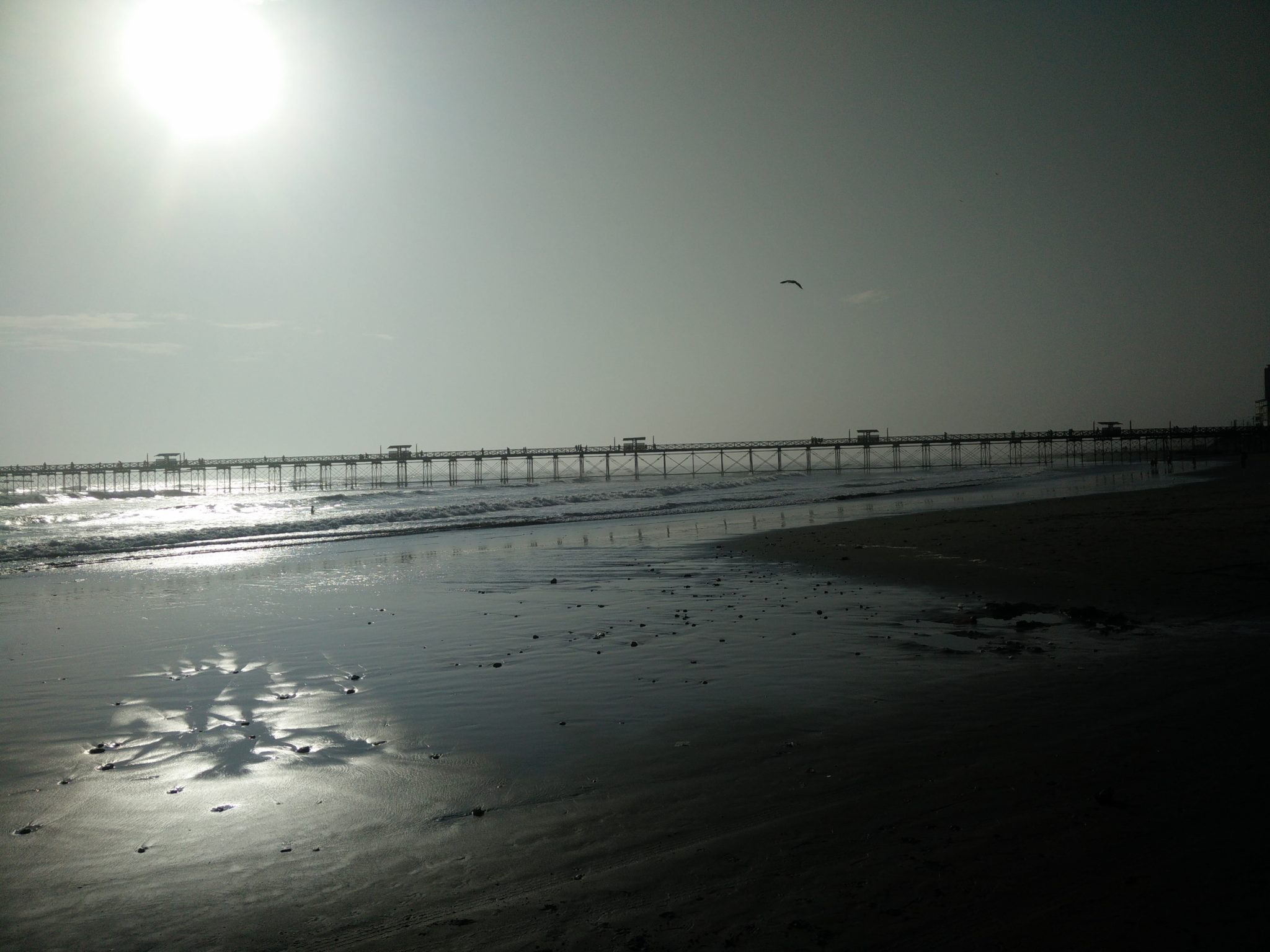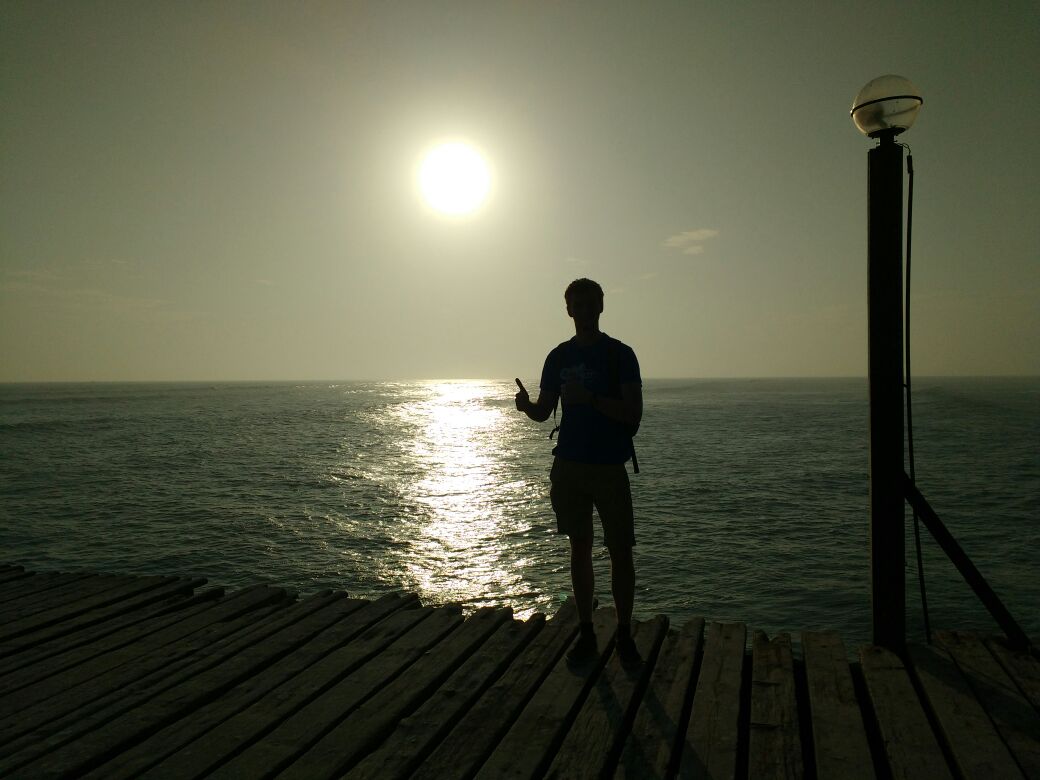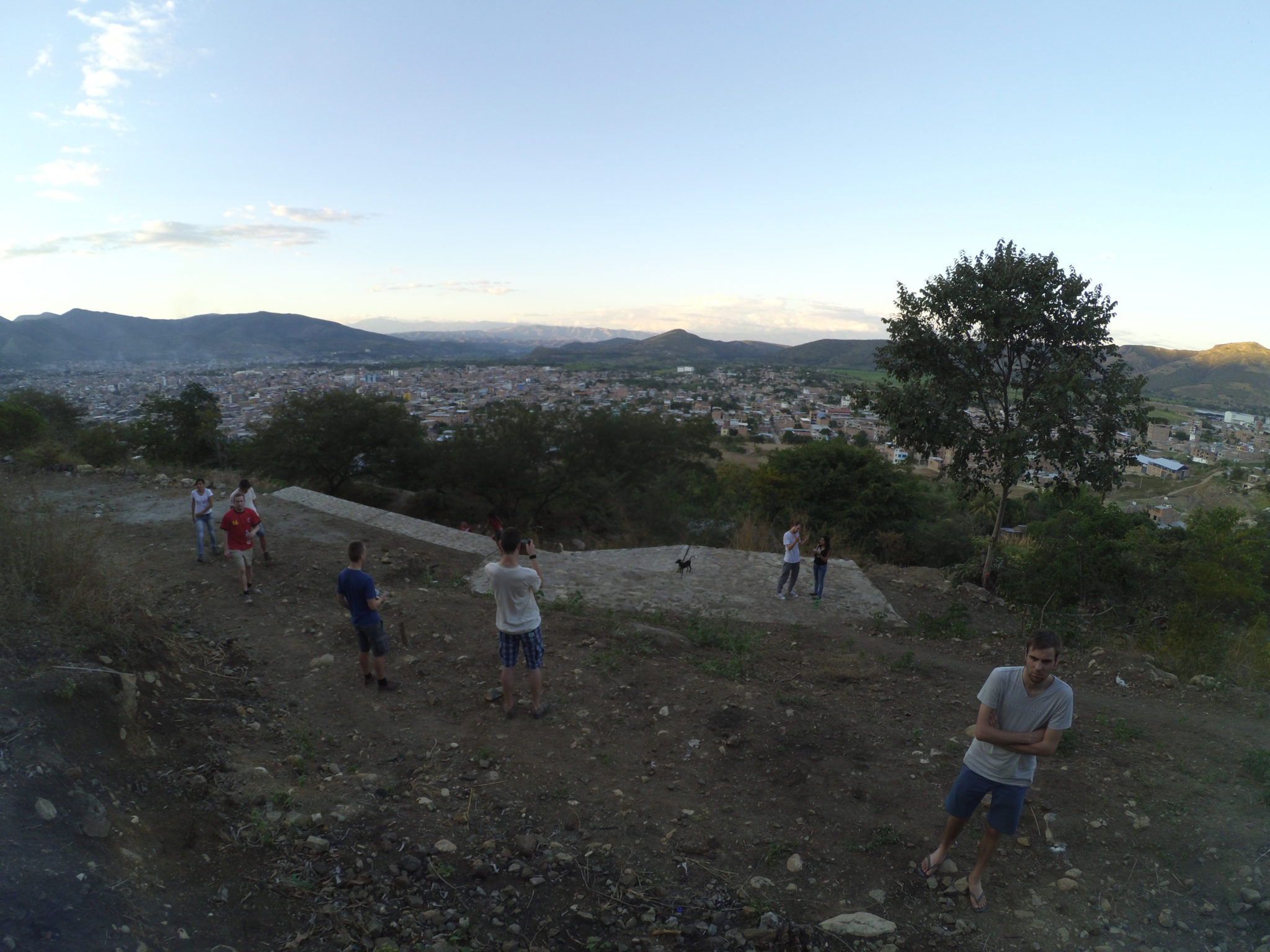English
My story began on the 23th of June, 3AM. With only two days between the exams and this point, I hopped on a plane to Madrid and from there to Lima. It was a very long flight and I could barely sleep on the plane, so I was pretty tired when I arrived. I decided to take a taxi and after negotiating the price, asked a taxi driver to bring me to a hotel. This is also when I got to know the crazy traffic in Lima. The hotel was only a few kilometres, but yet we needed over half an hour to get there. The next day happened to be a lot of waiting in the cellular shop to get my Peruvian SIM card working. I also went to see the ocean, which was a 20-minute walk in the suburbs of Lima. Lima is a pretty dirty city, at least the part I’ve seen from it. The beach was just a street for trucks and there was trash everywhere. I heard that there is a cleaner, nicer part of Lima though. Joren texted me that Ana María – a girl from Jaén that I’ve known from Humasol via WhatsApp – was going to Chiclayo, which is on the way to Jaén, so I decided to join her to go to a birthday party, as I couldn’t see Joren anyways that weekend because he would go on a trip. When the bus arrived at the terminal in Chiclayo, Ana María picked me up and showed me the city. I was introduced to new food and juices made from fruits I’ve never seen before.
But first something else: transport methods in Peru. There are a few different important ones, and none of them are really safe (nothing to worry about though, Mom). The main transportation method here is a motorcycle. I’ve seen four people on one motorcycle, none of them wearing helmets and all wearing just a T-shirt. They can drive past policemen; nobody seems to care. Only when the police need money, they are very strict for a few days and suddenly everyone wears helmets so they don’t get fined. When they have enough money, everything goes back to (Peruvian) normal. Of course, I don’t have a motorcycle here, so for me there are three main options, each for different distances. For short distances (20 minute walks, across half of the city), you can take a so called mototaxi. That’s really just a motorcycle transformed into a human transporting vehicle. There is space for two people and some bags in the back. Most of the time, it costs 1.5 soles (about €0.4), for longer distances and at night, it gets more expensive. For longer distances such as between two cities, you can use a minivan called ‘collectivo’. There’s room for about 15 people, and it does not depart if it’s not almost entirely full of people. We used one to get from Chiclayo to the birthday party (1,5-hour drive) and it cost 5 soles (just over 1 euro) per person. Collectivos drive like crazy. Signs on the road tell to drive 35 km/h and don’t pass anyone. At one point, we got passed by the police, driving 110 km/h. Incredible. For even longer distances, such as from Lima to Chiclayo (16 hours’ drive, cost about 80 soles or €20), you can take buses where you can sleep on. They also have different price classes and it’s almost always best to take the most expensive one, especially of you have long legs like I do.
Now, back to the story: something I didn’t knew when I bought chocolates for the birthday boy, was that it was his first birthday. That meant a lot of very loud music, silly games and sweet food with tons of sugar. I got introduced to some Peruvian habits. The first one is that at a moment, the child was passed on to all people in the circle, along with scissors and a plate. You’d have to take the scissors, cut some hair from the child and put some money on the plate. It’s kind of like a baptism. Even I got to do it. After we ate dinner, the dancing and drinking started. Another Peruvian habit here, is that there are only a few glasses and a few bottles of beer, that everyone drinks from. You take the bottle, pour the beer, pass on the bottle, drink your glass, pour a bit of the rest on the floor as a method of cleaning the glass, and then pass on the glass. If you don’t want to drink, you just pour almost nothing in your glass, drink that or throw most of it away, and pass the glass. You can’t just pass the glass and the bottle. After a few hours of dancing and watching drunk people, I got to sleep in a school nearby. Another Peruvian habit when I woke up: very heavy breakfast. We ate meat, yoka and rice. Someone was even eating fried guinea pig. After saying goodbye to everyone, we went back to Chiclayo, where we decided to take a collectivo to Pimentel, which is a nearby beach. After watching some surfers and taking pictures, we went back to Chiclayo and took the bus to Jaén. It was about 4AM when we arrived at casa voluntarios, my place to stay for the following months. Joren got up to let us in; he was pretty sick and tired so we immediately went back to sleep. The whole day after that, Joren introduced me to lots of people and places, explained me how Jaén works, where to get the best and cheapest food, and much more. Some things such as laptops, cheese, matrasses, TVs, washing machines, … are expensive here (European prices), but most things are Peruvian prices and thus about 3-4 times as cheap as in Europe. We also went to a local market where you can buy about everything. I learned about the different fruits here. They have lots of different types of bananas (for baking, cooking or just eating), potatoes, corn and also a lot of fruits that just don’t exist in Belgium. Wednesday (29th of July), we had an important skype meeting with Humasol, so we prepared for that and Joren is also applying for a grant so I helped him a bit filling in forms and stuff. After that, Joren showed me some of the shops he went to for the parts he used when he made all of the 20 prototypes. We also met a lot of people involved in the project, such as the Yapangos and a lot of people at sol y café. Joren also went through the whole coffee process with me and we even got to taste some coffee. People are very friendly here, and I think the jobs at sol y café are among the best you can get here in Jaén. During the rest of the time, I basically learned how to calibrate our devices and was introduced to more people. The more I used it, the more I fell in love with our device. It’s so simple to use, and every time I see these good results our device gives, I’m happier and happier to be working on this project. There is a lot of potential in this little box.
When Joren went back to Belgium, I moved my stuff to his room because it has a private bathroom. There wasn’t much time until the other Belgians arrived. I showed them some places Joren showed me and we met Ana María and Mili. We went to discover Jaén a little bit more. The next day the last two Belgians arrived, Freek and Robbe. As it was weekend, we couldn’t meet the Yapangos or visit sol y café, so we went to a food festival with Ana María and Mili. After that, we went to see Jaén from above, on the top of one of the hills a bit outside of the city (see pictures). Monday, we could finally visit some important people involved in the projects. We went to Sol y café to see the whole coffee process, just as Joren showed me. In the afternoon, we went swimming and we went to see the Yapangos. Some also went to Electro-oriente. Now it’s Tuesday (5th of July) and the other Belgians went to Miraflores, to see some people involved in their projects. I stayed here in Jaén to type my blog and collect some data from the humidity sensors. I still can’t start collecting data with the impedance meter, because the other team needs the same picoscope that I need too. Hopefully tomorrow I can finally start doing some real work.







